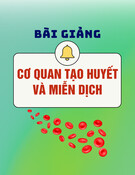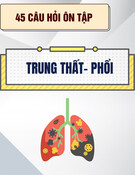
18 Journal of Medicine and Pharmacy - Vol.02 - No.1
STUDY ON THE QUANTITATIVE INSULIN
SENSITIVITY CHECK (QUICKI) INDEX IN OBESITY
Tran Huu Dang1, Tran Thua Nguyen2
Abstract:
Obesity is well known that in various human pathological states such as: essential hypertension,
coronary heart disease, type 2 diabetes mellitus,... Insulin resistance plays an important role
in pathological state of diabetes. Recently, Katz et al provided QUICKI index (Quantitative
insulin sensitivity check index) for insulin resistance condition evaluation. We carried out this
study to determine the prevalence of insulin resistance by the QUICKI index and to evaluate
the correlation between QUICKI index and the fasting glucose, insulin concentration. Subjects
and Methods: Control subject group: 30 cases healthy, not obese. Obese subject group: 107
individuals were chosen in General Internal Medicine and Geriatric Department, Hue Central
Hospital; never analyzed for glucose, diagnosis of diabetes, IFG/ IGT; They had at least one
in two criteria: BMI ³ 23 or/and waist to hip ration (WHR) > 0.9cm in men; > 0.8cm in
women Obesity, defined as a high BMI (³ 23 kg/m2). Android (Central) obesity, defined as
high WHR: > 90cm in men and > 80cm in women. Insulin resistance is defined as QUICKI <
X
- 2SD in control group. The value are given as mean ± SD. p value < 0.05 was considered
statistically significant. The group frequencies were compared by X2 or Fisher,s exact tests.
Spearman rank correlations were used to demonstrate relationship between variables. Results:
Our QUICKI index, studying on 107 patients, was significantly lower in the obese group and
healthy individuals (0.87 ± 0.16 and 1.07 ± 0.18). The prevalence of insulin resistance in
our study was 14.95%. QUICKI were significantly lower in the moderately obese group by
Hisayo Yokoyama, Masanori Emoro than our general obesity (0.338 ± 0.030; 0.87 ± 0.16,
respectively). Conclusion: The prevalence of insulin resistance in obesity: 14.95%. There were
inversely correlation between QUICKI and the fasting glucose, insulin concentration.
1. INTRODUCTION
The prevalence of obesity, is continuously
rising along with rapid economic development.
Obesity is a well known risk factor for various
human pathological states such as essential
hypertension, coronary heart disease, type 2
diabetes mellitus.
During the past decade, the prevalence of
obesity in Vietnam has doubled: from about
1- 2.5% (1991); 4.9% diabetes and 5.9%
impaired glucose tolerance (2001)
Insulin resistance played an important role
in pathological state of diabetes. Besides,
it also went along with obesity and other
cardiovascular risk factors.
The view of L. Landsberg: Overconsumption
of food, less thermo-production or both
of these compared with insulin resistance
caused hyperinsulinemia for controlling the
hydrocarbon metabolic in normal level.
Today, the treatment of IFG (impaired fasting
glucose) is too late, it is necessary to begin
DOI: 10.34071/jmp.2012.1e.2(1) Hue Central Hospital
(2) Hue University of Medicine and Pharmacy





























